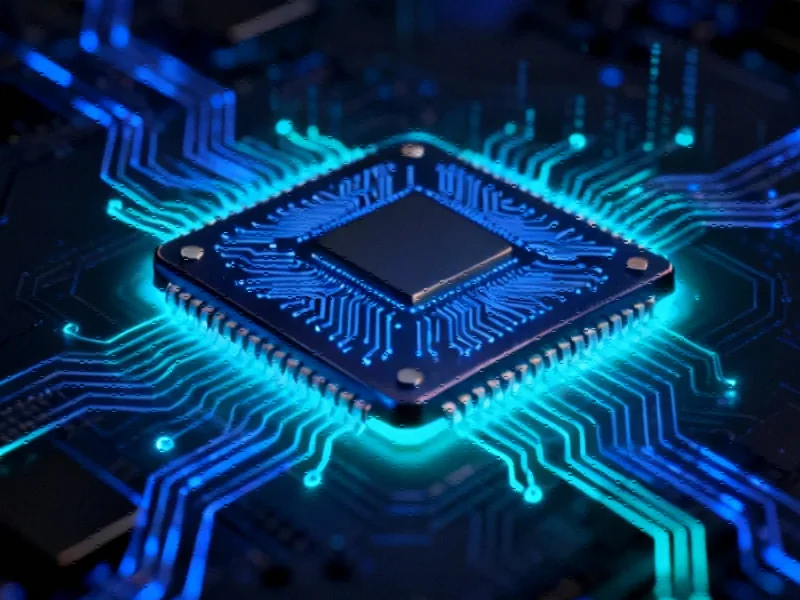The Dawn of PCIe Gen6 Ethernet for AI Workloads
Broadcom has unveiled the Thor Ultra 800G Ethernet Network Interface Card, marking a significant milestone in high-performance networking for artificial intelligence infrastructure. This groundbreaking NIC represents the industry’s first 800G AI Ethernet solution specifically engineered to meet the demanding requirements of modern AI data centers housing hundreds of thousands of XPUs.
The Thor Ultra leverages PCIe Gen6 x16 connectivity to deliver unprecedented throughput capabilities, addressing the critical performance bottlenecks that have traditionally hampered large-scale AI deployments. This advancement comes at a crucial time when AI models continue to grow in complexity and computational demands.
Overcoming Traditional RDMA Limitations
Traditional Remote Direct Memory Access (RDMA) technologies have long served as the backbone for high-performance computing, but they’ve increasingly shown their limitations in modern AI environments. Broadcom’s Thor Ultra directly addresses these shortcomings through innovative architectural improvements that redefine packet control precision.
The card introduces “Packet-Level Multipathing” and “Out-of-Order Packet Delivery” capabilities, enabling more efficient utilization of network resources while maintaining data integrity. These features represent a fundamental shift from conventional networking approaches, allowing for more dynamic and responsive data handling in high-demand scenarios.
Advanced Features for Next-Generation Data Centers
Beyond its core multipathing capabilities, Thor Ultra incorporates several sophisticated technologies designed to optimize performance in AI-driven environments. Selective retransmission mechanisms and programmable congestion control work in tandem to minimize latency and prevent data loss during peak operational periods.
The card’s support for 200G or 100G PAM4 SerDes, combined with long-reach passive copper connectivity, provides exceptional flexibility for data center architects. With one of the industry’s lowest bit error rates, Thor Ultra ensures remarkable connection stability that’s essential for continuous AI model training and inference operations.
Security and Ecosystem Integration
Security remains paramount in AI infrastructure, and Thor Ultra addresses this through comprehensive protection measures. The card performs line-rate encryption and decryption with PSP offload, significantly reducing computational overhead on host systems. Secure boot capabilities and signed firmware implementations strengthen device trust from the ground up.
Broadcom has designed Thor Ultra to align with the open Ultra Ethernet Consortium specification rather than pursuing a proprietary approach. This strategic decision enables customers to integrate the technology with compatible network switches and processing units without vendor lock-in, fostering a more flexible ecosystem for AI infrastructure development.
Broader Industry Implications
The introduction of Thor Ultra represents more than just another product launch—it signals a fundamental shift in how networking infrastructure will support future AI advancements. As part of Broadcom’s comprehensive Ethernet AI networking strategy, Thor Ultra joins other innovative components like Tomahawk Ultra and Jericho 4 to create a scalable, high-performance ecosystem.
This development aligns with broader industry developments toward more specialized hardware solutions for artificial intelligence applications. The timing coincides with other significant related innovations in the computing space that collectively push the boundaries of what’s possible in high-performance computing environments.
Implementation Considerations and Future Outlook
While Thor Ultra’s technical specifications are impressive, practical implementation considerations remain crucial for potential adopters. The card’s advanced capabilities must be evaluated against deployment complexity and cost-effectiveness, particularly in heterogeneous data center environments that incorporate multiple vendors’ technologies.
Broadcom has begun sampling Thor Ultra to early partners, suggesting that real-world performance data should emerge soon. This testing phase will be critical for understanding how the technology performs alongside other recent technology advancements and within existing infrastructure frameworks.
The broader implications of this technology extend beyond immediate performance gains. As detailed in comprehensive coverage of Broadcom’s announcement, this development could influence how data centers approach networking architecture for years to come. Meanwhile, parallel market trends in digital infrastructure continue to evolve, creating both challenges and opportunities for next-generation computing solutions.
As AI workloads continue to grow in scale and complexity, technologies like Thor Ultra will play an increasingly critical role in determining the upper limits of what’s computationally achievable. The coming months will reveal how quickly this technology gains traction and whether it delivers on its promise to revolutionize AI networking infrastructure.
This article aggregates information from publicly available sources. All trademarks and copyrights belong to their respective owners.
Note: Featured image is for illustrative purposes only and does not represent any specific product, service, or entity mentioned in this article.



